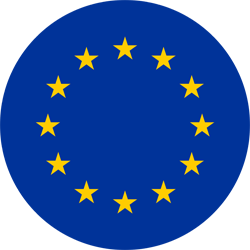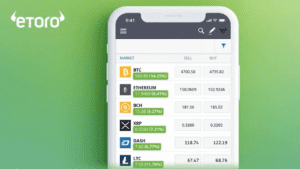In recent years, the investment landscape has undergone a seismic shift, moving away from a sole focus on financial returns to a more holistic approach that also considers environmental, social, and governance (ESG) factors. Nowhere is this trend more evident than in Europe, a region that has become a global leader in ESG investing. With an increasing number of asset managers, corporations, and individual investors prioritizing ESG criteria, the European investment market is setting new standards for sustainable finance.
The objective of this article is to provide an in-depth analysis of the rise of ESG investing in Europe. We will delve into the historical context, explore the key players and financial instruments, discuss the challenges and criticisms, and look at case studies to understand the real-world impact of ESG investments. Whether you’re a casual investor curious about sustainable options or a professional asset manager looking to diversify your portfolio, this article aims to leave no question unanswered.
Stay tuned as we navigate the complexities and opportunities of ESG investing in Europe, a phenomenon that is not just a trend but a fundamental shift in the way we think about investing for the future.
Historical Context
The Evolution of ESG Investing Globally
ESG investing is not a new concept, but its prominence in the global investment landscape has surged in the last decade. The roots of ESG investing can be traced back to the socially responsible investing (SRI) movement of the 1960s and 1970s in the United States. Initially, SRI was more about excluding “sin stocks” like tobacco, alcohol, and firearms from investment portfolios. However, the focus gradually shifted towards including companies that meet specific environmental, social, and governance criteria.
Join the world's biggest trading network & get instant access to a personal account manager!
The 2000s saw the formalization of ESG factors into investment decision-making, with the launch of specialized ESG indices like the Dow Jones Sustainability Index and the FTSE4Good Index. The United Nations-supported Principles for Responsible Investment (PRI) initiative in 2006 was a watershed moment, providing a global framework for incorporating ESG factors into investment practices.
Milestones in European ESG Investing
Europe has been at the forefront of the ESG investing movement, often setting the pace for the rest of the world. Key milestones include:
- EU Sustainable Finance Action Plan (2018): This comprehensive plan aimed to reorient capital flows towards sustainable investments, manage financial risks stemming from climate change, and foster transparency in corporate reporting.
- EU Taxonomy Regulation (2020): This regulation established a classification system for sustainable economic activities, providing a common language for ESG investing.
- Green Bond Issuances: European countries like France, Germany, and the Netherlands have been leaders in issuing green bonds, which are used to finance environmentally friendly projects.
- ESG Disclosure Regulations: Stricter disclosure requirements for asset managers and institutional investors have been implemented, increasing transparency and accountability.
Why ESG Investing is Gaining Traction in Europe
Regulatory Support
One of the most significant drivers of ESG investing in Europe is the strong regulatory framework. European Union directives and regulations, such as the aforementioned Sustainable Finance Action Plan and Taxonomy Regulation, have laid the groundwork for a more sustainable financial ecosystem. These regulations not only mandate ESG disclosures but also incentivize financial institutions to integrate ESG factors into their investment and risk assessment processes.
Public Awareness and Demand
The rise of ESG investing in Europe is also fueled by increasing public awareness about climate change, social inequality, and corporate governance issues. A growing segment of European investors is actively seeking investment opportunities that align with their values. This demand has led to the proliferation of ESG-focused funds, which have seen record inflows in recent years.
Corporate Initiatives
Corporations are another crucial player in the ESG landscape. Many European companies are adopting ESG practices not just as a compliance requirement but as a strategic imperative. Corporate Social Responsibility (CSR) reports are becoming standard, and there’s a growing emphasis on sustainability in corporate strategy. Companies are increasingly aware that strong ESG performance can enhance their brand, attract talent, and potentially lead to cost savings through efficiency improvements.
In summary, the rise of ESG investing in Europe is a multifaceted phenomenon, driven by regulatory support, public awareness, and corporate initiatives. The region is setting a global example, demonstrating that sustainable investing can be both a moral choice and a smart financial strategy.
Recommended ESG Investment Options in Europe
For those looking to dive into ESG investing in Europe, there are a plethora of options available, ranging from individual stocks to specialized ETFs. Below are some recommendations, along with a comparative table to help you make an informed decision.
Individual Stocks
- Ørsted: A leader in wind energy, Ørsted is a prime example of a company that has successfully transitioned from fossil fuels to renewable energy.
- Unilever: With its Sustainable Living Plan, Unilever aims to decouple its growth from its environmental footprint while increasing its positive social impact.
- Adidas: The sportswear giant has made significant strides in sustainability, particularly in its use of recycled materials.
ESG-focused ETFs
- iShares MSCI Europe ESG Screened ETF: This ETF offers broad exposure to European companies that meet specific ESG criteria.
- Lyxor New Energy ETF: Focuses on companies in the renewable energy sector, including solar, wind, and hydro.
- UBS MSCI EMU Socially Responsible ETF: Invests in Eurozone companies with high ESG ratings.
Green Bonds
- French Government Green OAT: These bonds finance environmental projects and have the full backing of the French government.
- ING Groenbank Green Bonds: Issued by ING’s green investment arm, these bonds finance renewable energy projects.
Comparative Table
| Investment Option | Asset Type | Focus Area | Risk Level | Historical Annual Return |
|---|---|---|---|---|
| Ørsted | Stock | Renewable Energy | Medium | 12% |
| Unilever | Stock | Consumer Goods | Low | 8% |
| Adidas | Stock | Apparel | Medium | 10% |
| iShares MSCI Europe ESG Screened | ETF | Broad European Exposure | Low | 7% |
| Lyxor New Energy | ETF | Renewable Energy | High | 15% |
| UBS MSCI EMU Socially Responsible | ETF | Eurozone Companies | Medium | 9% |
| French Government Green OAT | Green Bond | Environmental Projects | Low | 2% |
| ING Groenbank Green Bonds | Green Bond | Renewable Energy | Low | 3% |
Note: The historical annual returns are for illustrative purposes and are not a guarantee of future performance.
By considering these options and comparing their focus areas, risk levels, and historical returns, you can make a more informed decision that aligns with both your financial goals and ethical values.
Key Players in European ESG Investing
Navigating the ESG landscape in Europe involves understanding the various stakeholders who are shaping this burgeoning sector. Let’s delve into the key players who are instrumental in the rise of ESG investing in Europe.
Asset Managers
Asset managers are at the forefront of the ESG wave, offering a plethora of investment products that cater to varying degrees of risk tolerance, asset classes, and ESG criteria. Companies like BlackRock, Amundi, and UBS Asset Management have developed specialized ESG funds that invest in companies meeting stringent sustainability criteria. These asset managers often employ teams of ESG analysts who rigorously assess companies based on a range of factors, from carbon footprint to labor practices.
Regulatory Bodies
Regulatory agencies play a pivotal role in shaping the ESG investment landscape. The European Securities and Markets Authority (ESMA) and the European Banking Authority (EBA) are among the key regulatory bodies that oversee ESG disclosures and compliance. Their guidelines and directives set the standards for what constitutes responsible investing, thereby influencing the behavior of asset managers, institutional investors, and corporations.
Non-profit Organizations
Non-governmental organizations (NGOs) and other non-profit entities are also significant players in the ESG arena. Organizations like the Principles for Responsible Investment (PRI) and the Carbon Disclosure Project (CDP) provide frameworks and reporting standards that help investors make informed decisions. These organizations often collaborate with both asset managers and regulatory bodies to promote transparency and accountability in ESG investing.
Financial Instruments and Strategies
As ESG investing gains traction, a variety of financial instruments and strategies have emerged to meet the diverse needs of investors. Here’s a closer look at some of the most prevalent options.
ESG-focused ETFs
Exchange-Traded Funds (ETFs) that focus on ESG criteria offer investors a convenient way to diversify their portfolios while adhering to their ethical convictions. These ETFs typically track indices composed of companies that meet specific ESG standards. They offer the advantages of lower costs, higher liquidity, and transparency, making them an attractive option for both retail and institutional investors.
Green Bonds
Green bonds are debt securities issued to finance projects that have a positive environmental impact, such as renewable energy installations or pollution control measures. European countries like Germany, France, and the Netherlands have been pioneers in issuing green bonds, and the market has seen exponential growth. These bonds often come with tax incentives, making them an attractive investment vehicle.
Social Impact Funds
Social impact funds are investment funds that aim to generate measurable social or environmental impacts alongside financial returns. These funds often invest in sectors like affordable housing, healthcare, and education. They are particularly popular among investors who want to make a tangible difference through their investment choices.
ESG Rating Systems
To facilitate informed investment decisions, several ESG rating systems have been developed. These ratings evaluate companies based on their performance in environmental, social, and governance aspects. Agencies like MSCI, Sustainalytics, and Moody’s provide these ratings, which are increasingly being used by asset managers to construct ESG portfolios.
Challenges and Criticisms
While the rise of ESG investing in Europe is undoubtedly a positive development, it’s essential to address the challenges and criticisms that accompany this trend. Understanding these issues can help investors make more informed decisions and contribute to the sector’s overall integrity.
Greenwashing
One of the most significant criticisms of ESG investing is greenwashing, a practice where companies or investment products exaggerate or falsely claim to be environmentally friendly. This misleading marketing can make it difficult for investors to differentiate between genuinely sustainable investments and those that are merely capitalizing on the trend. Regulatory bodies are increasingly cracking down on greenwashing, but it remains a persistent issue that investors need to be wary of.
Data Inconsistency
The lack of standardized ESG metrics and reporting can lead to data inconsistency, making it challenging to compare different investment options accurately. Various rating agencies use different methodologies to assess companies’ ESG performance, leading to discrepancies that can confuse investors. Efforts are underway to standardize ESG reporting, but until then, investors should exercise caution and conduct thorough due diligence.
Regulatory Hurdles
While regulatory support has been a significant driver of ESG investing in Europe, it can also pose challenges. The evolving nature of ESG regulations means that asset managers and investors must continually adapt to new rules and compliance requirements. This dynamic landscape can create uncertainty and increase the cost of ESG investing, particularly for smaller asset managers who may lack the resources to navigate complex regulatory frameworks.
Case Studies
Examining real-world examples can provide valuable insights into the effectiveness and impact of ESG investing. Here are some case studies that highlight successful ESG investments in Europe and the lessons learned from them.
Examples of Successful ESG Investments in Europe
- Ørsted’s Transformation: Danish energy company Ørsted underwent a remarkable transformation from one of Europe’s most coal-intensive utilities to a global leader in renewable energy. Investors who recognized this shift and invested in Ørsted have not only contributed to a greener planet but have also enjoyed substantial financial returns.
- Unilever’s Sustainable Living Plan: Consumer goods giant Unilever has been a pioneer in integrating sustainability into its business model. The company’s focus on reducing its environmental footprint and improving social conditions has made it a darling among ESG investors, and it has delivered consistent returns over the years.
- Adidas and Sustainability: The German sportswear manufacturer Adidas has made significant strides in sustainability, particularly in its use of recycled materials for its products. The company’s ESG efforts have been well-received by investors, reflected in its strong stock performance.
Lessons Learned
- Due Diligence is Key: The case of Ørsted underscores the importance of thorough research. Investors who did their homework were able to identify the company’s commitment to sustainability before it became mainstream, reaping the financial benefits.
- Long-term Strategy Matters: Unilever’s case shows that companies with a long-term sustainability strategy tend to perform better in the ESG space, offering more reliable returns to investors.
- Consumer Preferences Drive Change: The success of Adidas in the ESG arena highlights how consumer demand for sustainable products can drive corporate behavior, creating investment opportunities in the process.
By understanding both the challenges and the real-world successes of ESG investing in Europe, investors can make more informed decisions that align with both their financial goals and ethical values.
Future Outlook
As ESG investing continues to gain momentum in Europe, it’s crucial to look ahead and consider what the future holds for this burgeoning sector. Here are some key aspects to watch.
Upcoming Regulations
The regulatory landscape for ESG investing in Europe is continually evolving. The European Commission is working on several initiatives, such as the Corporate Sustainability Reporting Directive (CSRD), which aims to improve the quality and scope of sustainability information disclosed by companies. Investors should keep an eye on these developments, as they will likely have a significant impact on ESG investment strategies and compliance requirements.
Market Trends
The demand for ESG investment products is expected to grow, driven by increasing public awareness and the urgency of addressing climate change and social inequalities. Themes like circular economy, clean energy, and social justice are likely to dominate the ESG landscape, offering new investment avenues.
Investment Opportunities
As ESG investing matures, we can expect more nuanced and specialized investment products to emerge. From ESG-focused real estate funds to thematic ETFs targeting specific Sustainable Development Goals (SDGs), the range of investment opportunities is likely to expand, providing investors with more options to align their portfolios with their values.
Conclusion
The rise of ESG investing in Europe is more than just a trend; it’s a fundamental shift in the investment paradigm that integrates financial returns with social responsibility and environmental stewardship. Driven by robust regulatory frameworks, increasing public awareness, and corporate initiatives, ESG investing has become a cornerstone of the European financial landscape.
As we navigate this evolving sector, due diligence, transparency, and adaptability will be key. Whether you’re a casual investor or a seasoned asset manager, the European ESG market offers a plethora of opportunities to not only generate returns but also contribute to a more sustainable and equitable world.
FAQs
What is ESG Investing?
ESG stands for Environmental, Social, and Governance. ESG investing involves considering these factors alongside financial metrics when making investment decisions.
How Do I Start with ESG Investing in Europe?
You can start by researching ESG-focused funds, ETFs, or individual companies that align with your values. Many asset managers offer specialized ESG portfolios, making it easier for investors to get started.
Are ESG Investments Less Profitable?
Contrary to some misconceptions, ESG investments can offer competitive returns compared to traditional investments. In many cases, companies with strong ESG practices are better positioned for long-term success.
How Do I Avoid Greenwashing?
Due diligence is crucial. Look for third-party ESG ratings, read sustainability reports, and consider the track record of the asset manager to gauge the authenticity of an ESG investment.
What Are the Key Regulatory Bodies for ESG Investing in Europe?
The European Securities and Markets Authority (ESMA) and the European Banking Authority (EBA) are among the key regulatory bodies overseeing ESG investing in Europe.
By understanding the complexities and opportunities in the European ESG landscape, you can make more informed investment decisions that align with both your financial goals and ethical values.

















